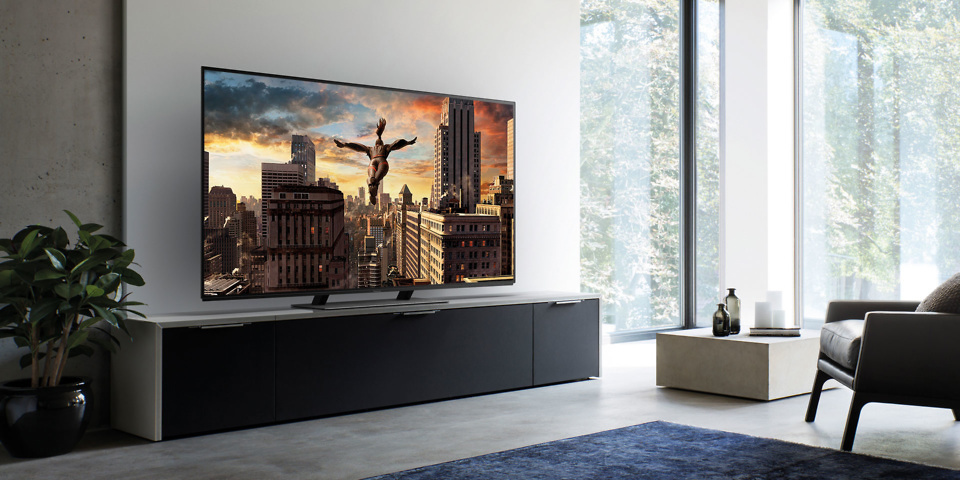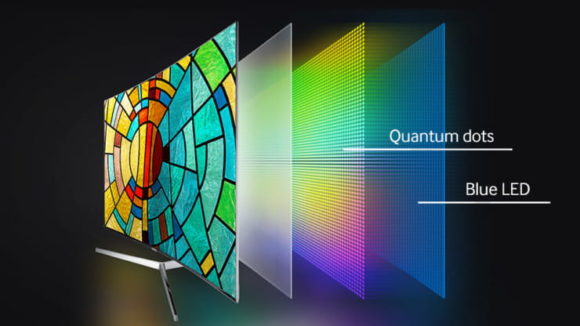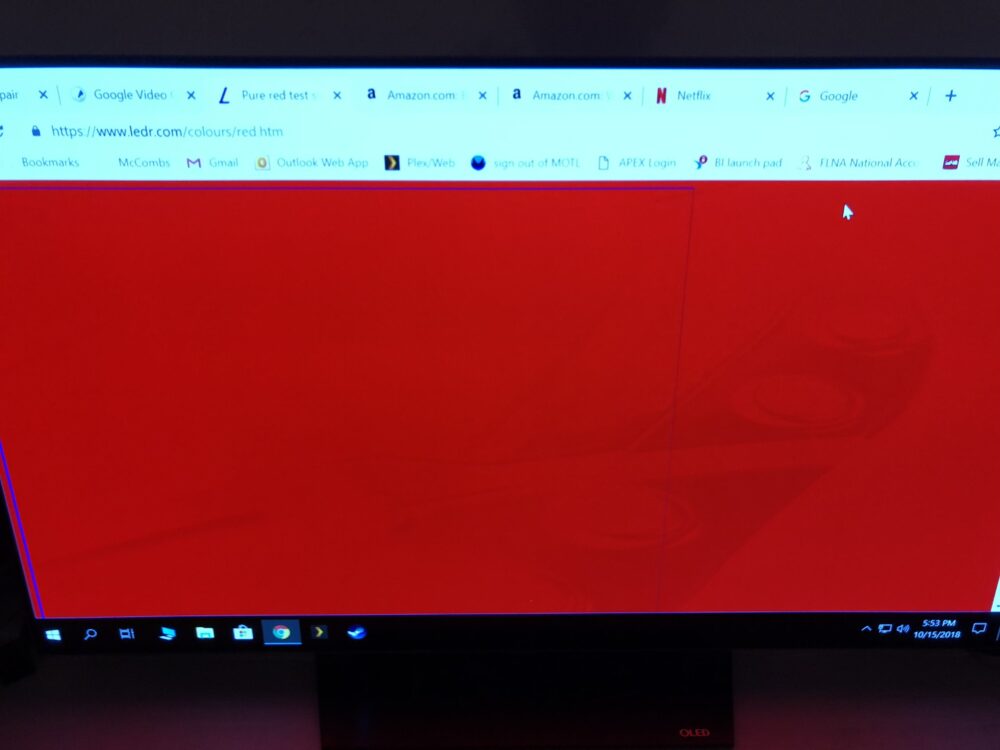Every year, companies seem to make up new words with LEDs and they just seem to add a letter ’S’ ‘Q’ and ‘O’ but the question is: What are the differences between these TV technologies? In this article, I will be looking at the differences between three major TV technologies: SLED, QLED, OLED and see which is the best TV to buy.
SLED Vs QLED Vs OLED: which is better Let’s find out everything we know so far
SLED (Superluminescent LED):
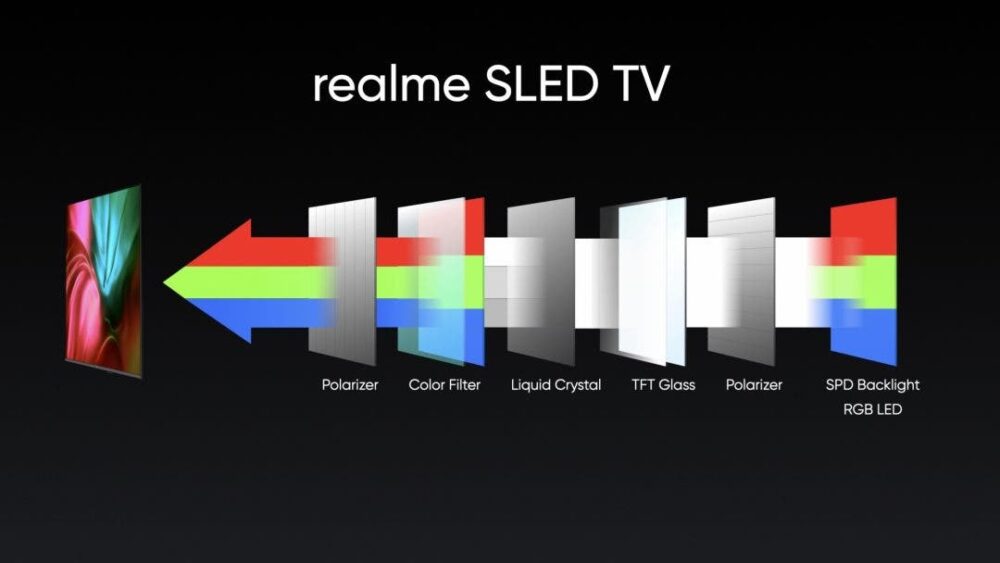
Realme recently announced their latest Realme 4K SLED TV which was released on 7th October 2020. The TV has caught the attention of reviewers and customers with the term, ‘World’s First Smart LED TV’. SLED is certainly something that wasn’t heard of before. What is it?
- SLED stands for Superluminescent diode. It is the best of both worlds High Brightness of Laser Diodes and light-emitting diodes (LED).
- SLED doesn’t use blue light but uses RGB diodes as the backlight. So, lower blue-light emission.
- SLED is an improved version of LED TV. Essentially, it is pushing the LED technology to its limit.
The sample size for this technology is minuscule as Realme 4K SLED TV is the only TV with this tech. So, there is still much to be learned. They say that the TV offers 108% NTSC format coverage, but this is just ridiculous. Manufacturers should be ashamed for publishing their specifications in terms of NTSC, an obsolete 60+-year-old technology! They haven’t stated anything about other Colour Gamut support like Adobe RGB or DCI-P3. So, you can expect mediocre colours from SLED.
QLED (Quantum Dot LED)
QLED is one of the rising TV technologies and Samsung has been putting this technology in its FlagShip TVs.
- QLED stands for quantum dot LED. It uses LED technology but uses Quantum Dots for Colours. Meaning when you provide the Quantum Dots energy (Blue-Light) they glow in different colours depending on their size like red, green, and blue
- QLED emits pure Blue, Red, and Green colours. This helps them achieve very accurate colours and most QLED displays on the market have support for the benchmark DCI-P3 standard (which means its high colour accuracy)
- QLED is a type of LED display but is simply much better.
Not all QLEDs are the same, cheaper TV using QLED is not the same as expensive TV using QLED, so don’t get along the marketing hype. I would highly recommend checking out the reviews of QLED TV before buying. Here are the newest QLED TVs on the market.
OLED (Organic LED)

OLED has been prevalent in the industry for quite a long time. In fact, there’s a good chance your phone is using an OLED display or AMOLED (it’s the same as an OLED display). The most expensive TVs also seem to use OLED.
- OLED stands for Organic Light Emitting Diode. It uses small OLED subpixels to emit light instead of using LED
- OLED’s pixels emit its own light meaning they can individually turn On/Off. They can deliver the purest black.
- OLED is not the same as LED, they are completely different technology.
OLED’s are extremely expensive and the stating price of the TV is a big thing that sways the customer away. OLED TVs also aren’t particularly big for the price too, 55-inch and 65-inch TV cost a fortune.
Differences:
| Parameter | SLED | QLED | OLED |
| Picture Quality | Picture Quality better than LED but not better than QLED | Picture Quality for a well-made QLED is the best and surpasses OLED. Cheap QLED is not as good as expensive QLED but still better than SLED. | OLED offers amazing Picture Quality. |
| Response Time (for Gaming) | Slow(Depends on TV) | Slow-Fast (Depends on TV) | Very Fast |
| Viewing Angles | Good Viewing Angles | Great Viewing Angles | Viewing Angles are not good. The colour shift occurs at 50° |
| Contrast | Mediocre(Depends if the TV includes Local-Dimming) | Mediocre (Depends if the TV includes Local Dimming) | The Best. |
| Brightness | Medium | Very High | Very High |
| Size | Easily scalable and Bigger Displays will be available | Easily scalable and Big Displays are available | Not Easily Scalable and Big TV aren’t easily available. |
| Price | Cheap and Affordable | Ranges from Affordable to Expensive | Is very Expensive |
Problems of SLED, QLED, and OLED
The main differences have been put in a tabular form above. Though it doesn’t explain the disadvantages of SLED, QLED, and OLED.
SLED:
- SLED has mediocre brightness and Realme 4K SLED TV is not an HDR TV.
- Picture Quality is also not best and at the same price QLED TVs are also available.
- The Bright Scenes are over-blown.
- Contrast is Mediocre
QLED:
- The response time is not very good and can’t rival OLED.
- NOT all QLED TVs are built the same. QLED TVs have a lot of variation in features and picture quality. So, one must refer to the TV reviews.
- Even with Local Dimming, the contrast is not as good as OLED TVs.
OLED:
- Burn-in issues: When you view content on an OLED for a long period, it leads to the retention of images. An example is shown below. Though manufacturers in recent years have done a lot to mitigate it.
(Example of Burn-In if an Image remains on OLED TV for a long time; Image Credit: reddit.com) - Extremely Hard to Find a High-Refresh Rate OLED display, especially with next-gen consoles like PS5 and Xbox Series X targeting 120FPS.
- Black Crush: OLED though, may be praised for their Black Levels, but they have problems dealing with grey. Meaning, that during a dark scene in a movie, a particular grey level cannot be displayed by the OLED as they are not capable to do it, so they turn the pixels if that grey level arises. This causes what is known as Black Crush.
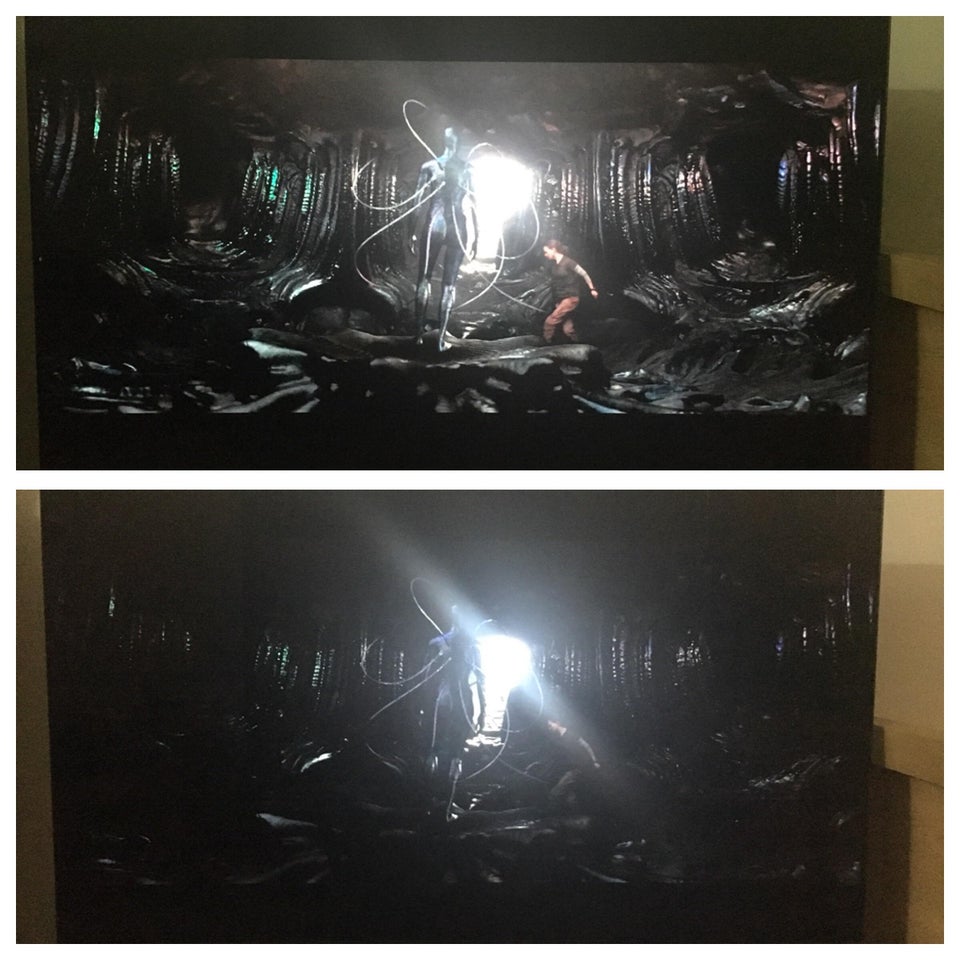
Conclusion:
There are a lot of differences between each TV technology. The decision always lies with the customer to choose what’s best for them. For the best bang for the buck, SLED offers great value, but there should have been more TVs on the market other than the Realme 4K SLED TV. QLED is a genuinely impressive technology and offers amazing picture quality. OLED offers the best picture quality and contrast but comes with its fair share of problems that one wouldn’t like to see in an expensive display. It’s not a great time to be a TV buyer and it’s recommended that you should wait out for future display technologies like MicroLED and QD-OLED (Quantum Dots + OLED).
Also Read:
- Tech Education: Fault Line In The Age Of Corona
- 5G Will Revolutionize The World As We Know It
- PS5 Vs Xbox Series X: Who Will Win The Console Wars?
- 12 Interesting Things You Didn’t Know About Apple
- 10 Headlines From The Pre-Pandemic 2020 That Feel Like They Happened Ages Ago


